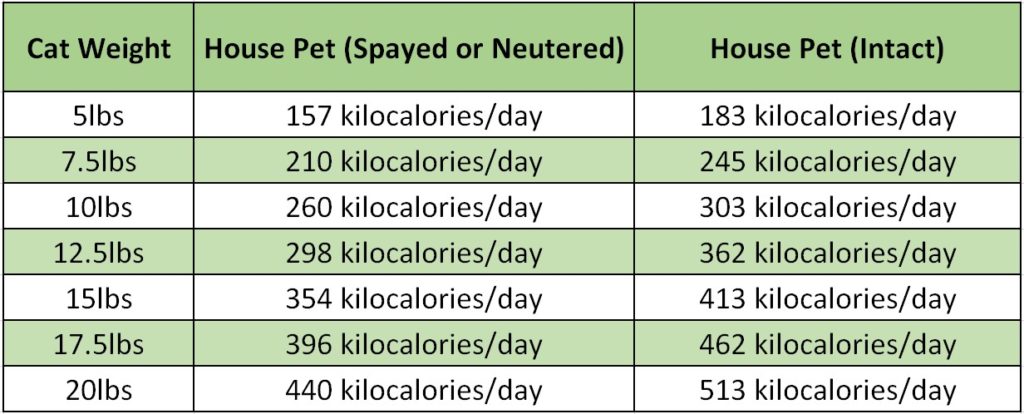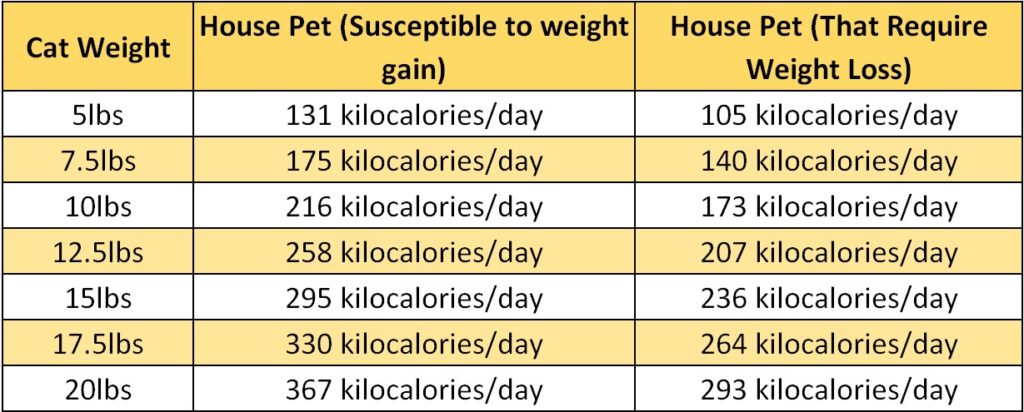
A prevailing health condition among cats these days is obesity. While traditionally, cats used to hunt their food, it involved a lot of physical activities. This helped keep the weight down while giving them access to ample nutrition.
However, a typical pet cat doesn’t live in the wild. With no need to hunt down the food, the need for physical activities is minimal. This can lead to unwanted weight gain. Moreover, the dry food available online might have different concentrations and amounts of nutrition.
So, how much dry food should a cat eat?
So, it might be difficult to ascertain how much dry food should be fed to your dog. To help you out, here is a complete guide.
In case you are dealing with the watery cat stool, then you might also like to read best cat food for firm stool, these are the foods that are formulated to keep your cat’s bowl regular and get the firm stool.
Factors to keep in mind when feeding dry food
If your pet is overweight or obese, you need to ensure that you give them the right amount of dry feed. Several factors come into play when determining this. So, let us check them out:
- Your pet’s age
- Your cat’s existing weight
- Your cat’s daily activities and energy level
- If the cat is nursing kittens or pregnant
- Whether you are feeding a combination of dry and wet or simple dry food
- The nutrients required by your cat
- Whether your cat stays outdoors, indoors, or both
- Your lifestyle and budget
- Whether they are dehydrated or not
Nutrition Needed by Your Cat
Since cats prefer a carnivorous diet, it would surely be different from what other pets might need. So let us take a look at the necessities of your cat’s diet:
- Arginine: It is an important amino acid commonly found in different meat variants. Unfortunately, cats cannot produce this important enzyme. However, it is required to remove the ammonia content in their bodies.
- Protein: Cats prefer protein that comes from poultry, fish, or meat. Kittens especially require a high-quality protein-based diet.
- Vitamins: Cat’s diet needs to have an abundance of niacin, vitamin A, & vitamin D.
- Taurine: Taurine is a form of amino acid vital for your kitten’s growth and adult cats. However, it isn’t produced in the cat’s body and must be supplemented via diet.
- Water: Hydration is critical for cats to ensure they do not face urinary issues.
Apart from this, you also need to keep in mind the ash content in the dry diet. Therefore, refrain from dry variants with more than 8 percent ash content mentioned in their ingredient list.
How much dry cat food per day?
It is suggested that cat owners read the dry diet labels being given to their pets. Pay close attention to numbers in terms of nutrition content. Some cat diet contains a good amount of calorie that goes as high as 500 calories/cup. An average-sized lean cat with close to 10 pounds would need 250 calories/day, which means ½ a cup of food.
One should also note that smaller cats or cats with lower energy levels need a less dry diet. Moreover, overeating should be avoided by cats that mostly stay at home. Finally, if you are a pet parent of more than one cat, you should have a separate feeder for each.
Typically, cats that prefer a dry diet tend to have less plaque or dental tartar. However, cats that consume dry food might skip drinking water and tend to suffer from dehydration issues.
Remember, dry food is surely inexpensive, but you should remember that moderation is the key, especially when your cat is overweight or obese.
Here is a chart that shows the amount of dry food to be given to a typical cat.
| Cat Weight | Active Cats (Cups/Day) | Less Active (Cups/Day) |
| 4lbs | 1/3rd Cup | 1/3rd Cup |
| 6lbs | 3/8th Cup | 3/8th Cup |
| 9lbs | ½ Cup | ½ Cup |
| 11lbs | 5/8th Cup | ½ Cup |
| 13lbs | 2/3rd Cup | 5/8th Cup |
| 17lbs | 3/4th Cup | 2/3rd Cup |
| 22lbs | 1 Cup | 2/3rd Cup |
| 26lbs | 11/8 Cup | 3/4th Cup |
Nutritional Requirements for Different Types of Cats

Nutritional Requirements of Cats for Weight Loss and Weight Gain

How often should I feed my cat?
Most dry diet manufacturers recommend the daily feeding requirements. Since dry food is easy to serve, put the required amount in the bowl and slowly let the pet eat it. Most cats prefer to nibble through their meals now and then instead of eating it in one go.
So, there is no set practice regarding how many times you should feed your cat per day. If you want, you can divide the recommended daily portion into two parts and serve it in the morning and evening.
Once you start this routine, make sure you keep an eye on the cat to check if things are going well.
Here are things you need to monitor:
- Leaving the food bowl after sniffing
- Feeling hungry at midnight
- Emptying the bowl but still gaining weight
- Eating happily & maintaining the weight & activity levels
Cats can easily go without a diet for 48 hours. However, if your pet hasn’t consumed food for 48 hours or more, you need to consult the veterinarian to understand what could be wrong.
Pets that suffer from any underlying condition must be fed only after a veterinary consultation. The recommended dry food amount can vary depending on what disease they are suffering from. While some unhealthy cats would need more diet, others might not need as much.
Moreover, younger cats need more caloric intake as opposed to a fully grown adult cat. This is because kittens are growing and active most of the time. With such a high metabolism, it is important to fulfill their nutritional requirements.
Apart from this, it would help if you refrained from feeding only vegetarian or vegan dry food to cats as it could cause several health issues in the long run. Nutrients such as Taurine can only be found in animal tissues.
The absence of taurine could cause heart issues, blindness, or even death.
Frequently Asked Questions
1. How much dry food should a cat eat per day?
If you feed your cat a good-quality dry diet with proper protein content, an indoor cat would need 1/3rd to ½ cup diet. Popular dry food brands have 500 calories approx for 8 ounces of dry food.
2. How much dry food should a cat eat to lose weight?
For an overweight or obese cat, you need to feed them 1/3rd of the recommended dry food for their current weight. Now, most pet owners believe that they should follow the dietary requirements for suggested or average cat weight.
However, this could slow down their metabolism further and fail to provide their nutritional requirements.
3. How much dry food should a cat eat per meal?
There are no set rules and regulations when it comes to feeding the necessary dry food per meal. Most cats love to nibble throughout the day. So, the key is to serve them one time and let them be.
If you plan on dividing the daily meal portion, you can segment it two times a day.
4. How much dry food should a 10lb cat eat?
An average lean-bodied cat which is around 10 pounds, would need about 250 calories/day. This means you should divide 500 calories of cat food into two portions and serve one.
5. How much dry food should an 8-month-old cat eat?
An 8-month-old cat with an approximate body weight of 6.5 to 7.5 pounds would need about 20 to 30 calories/pound depending on the body weight.
6. How much dry food should a 12lb cat eat?
The daily recommendation for dry food for a 12lb cat ranges between 24 and 35 calories/day/pound.
This helps keep the cat at a healthy and normal weight.
7. How much dry cat food should a kitten eat/day?
Starting from the age of 6 months, the kitten’s growth begins to slow down. This means that the nutritional requirements would change.
As a result, the meal requirements also change, and it can be brought down to 2 from 4.
For furkid parent’s education, we recently added new resources on how long can dry cat food sit out? and how long can you leave wet cat food out? These will help you understand how much time you can leave the cat food outside so you can save the food from being spoiled.
In the section on how to make wet cat food, we share three new recipes to cook at home. I love to play cat games, and recently I figured out how to get cat food in battle cats; these ten ways might help you keep your cat healthy in the game.
Conclusion
When serving dry food to your pet, it is important to ensure that it is palatable and doesn’t have a bad odor. Cats are generally picky when it comes to eating food. So, any change in the diet should be slow and monitored properly.
Also, make sure you have a bowl full of water beside your cat to ensure they are properly hydrated when eating dry food.
A dry diet is also good for your pet’s oral health as they help remove plaque or tartar development.
